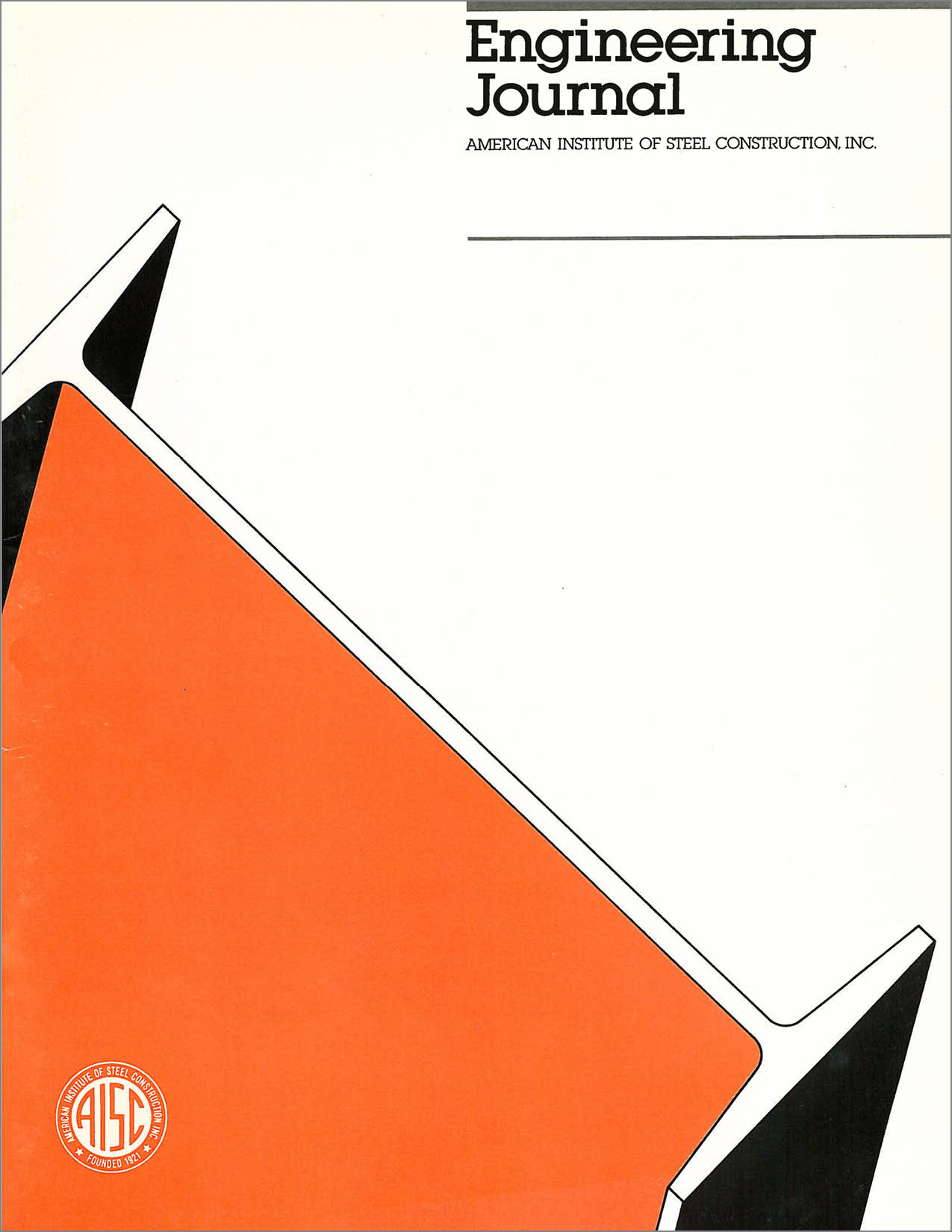Low-Cycle Fatigue Behavior of Semi-Rigid Top-and-Seat Angle Connections
DOI:
https://doi.org/10.62913/engj.v31i3.627Abstract
Constant amplitude reversed cyclic load tests were performed to investigate the low-cycle fatigue behavior of a commonly used class of semi-rigid connection: the top-andseat angle. All specimens had the same geometrical properties. The test results show that the plastic moment capacity and connection stiffness are sensitive to how the nut and bolts are oriented when tightened. However, upper and lower bounds of strength and stiffness can be predicted using standard yield line (plastic) theory. The variability in strength and stiffness does not appear to affect the fatigue life. Fatigue life predictions can be made for this class of connection using relationships analogous to the well-known Manson-Coffin1,2 strain-life equation for metals. Mean rotation (analogous to mean stress) effects are also examined and are shown not to be significant over the range of plastic rotations (0.003 to 0.10 radians) considered. Hysteretic energy-life and energy-rotation relations were also developed. Such relations are useful in seismic damage modeling. For the top-and-seat angle connections considered in this study, the large fatigue based plastic rotation capacity (approx. 3 percent) would generally significantly exceed expected demands for most structural steel systems in a typical US earthquake, where total drift rarely exceeds 2 percent.

